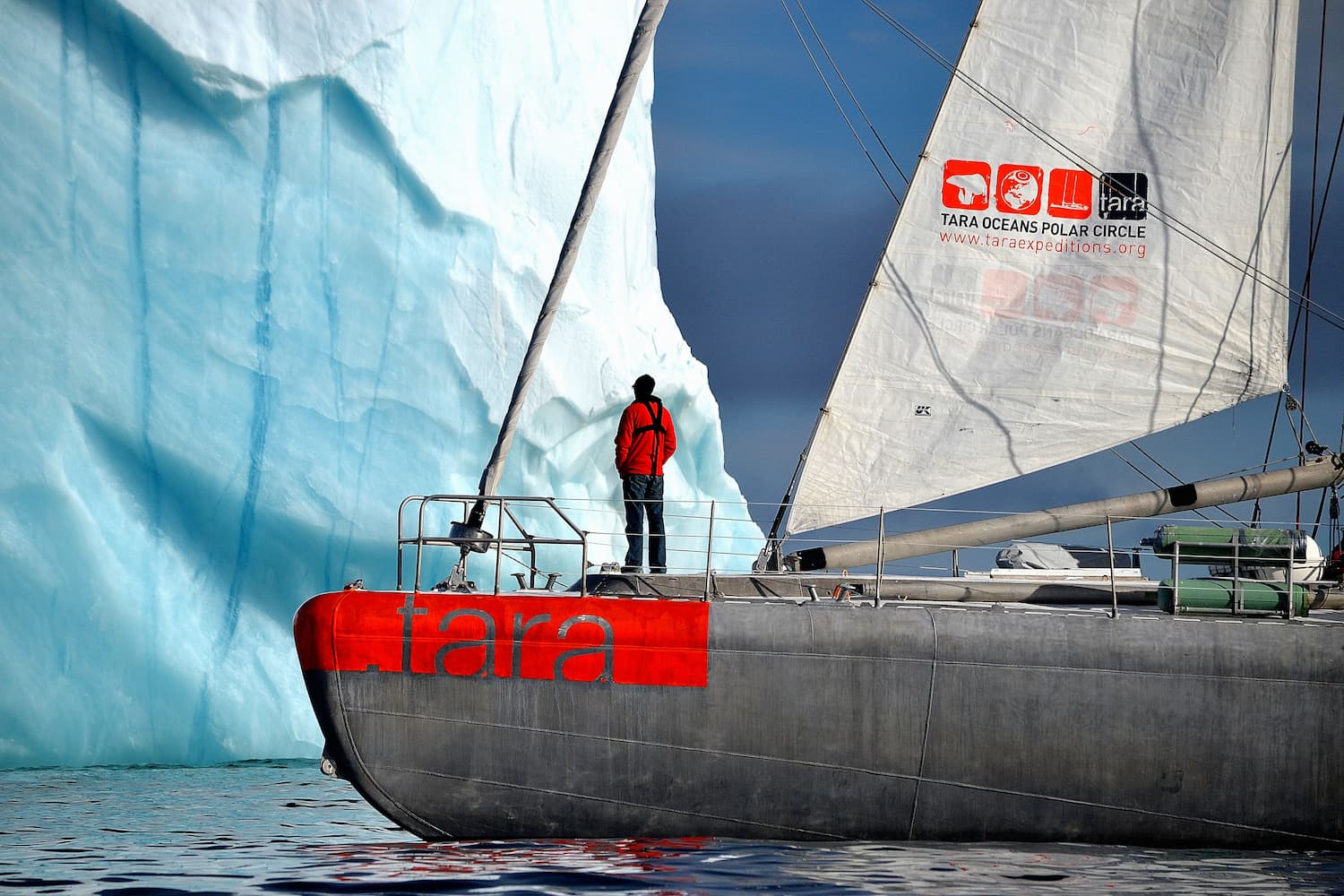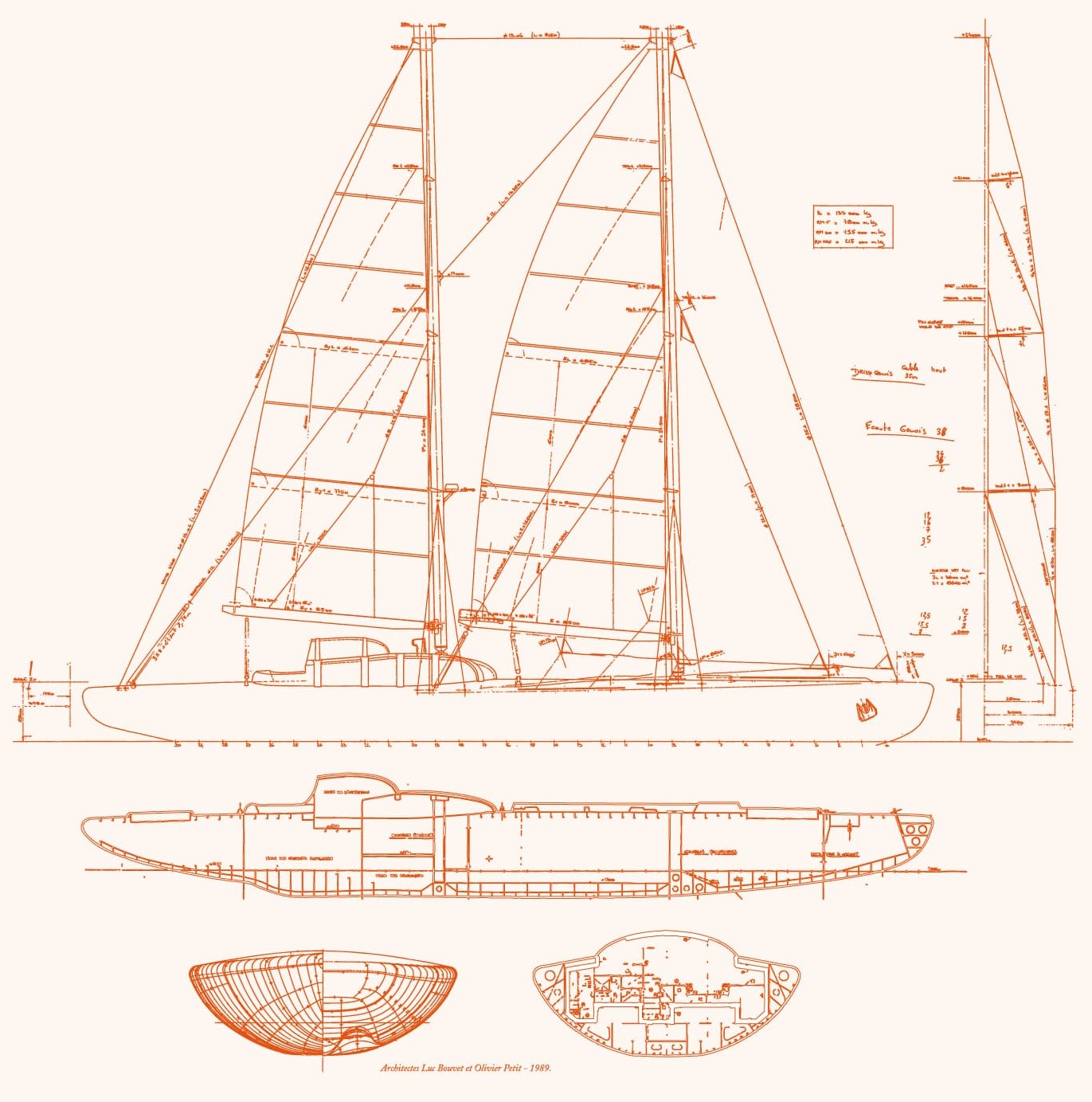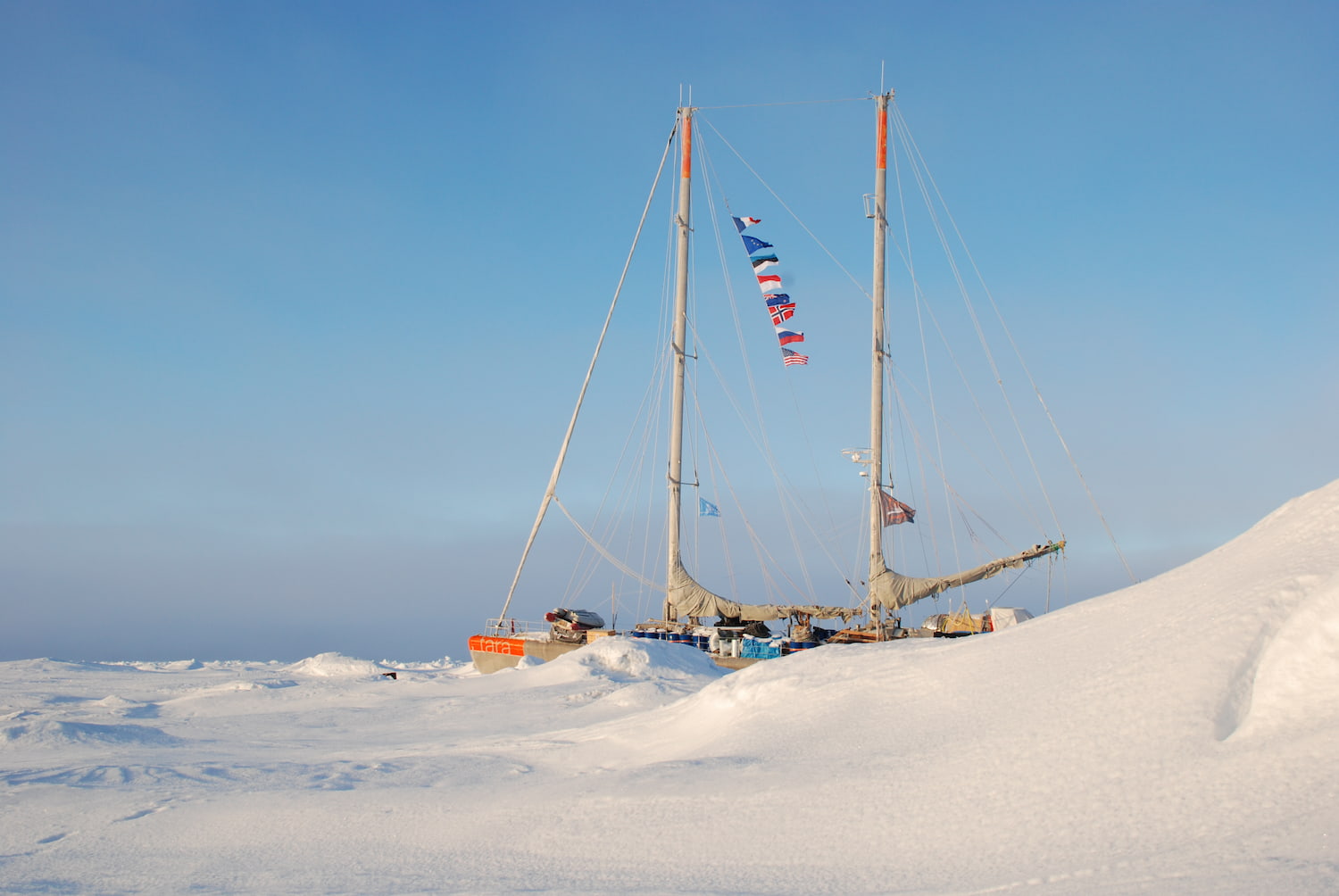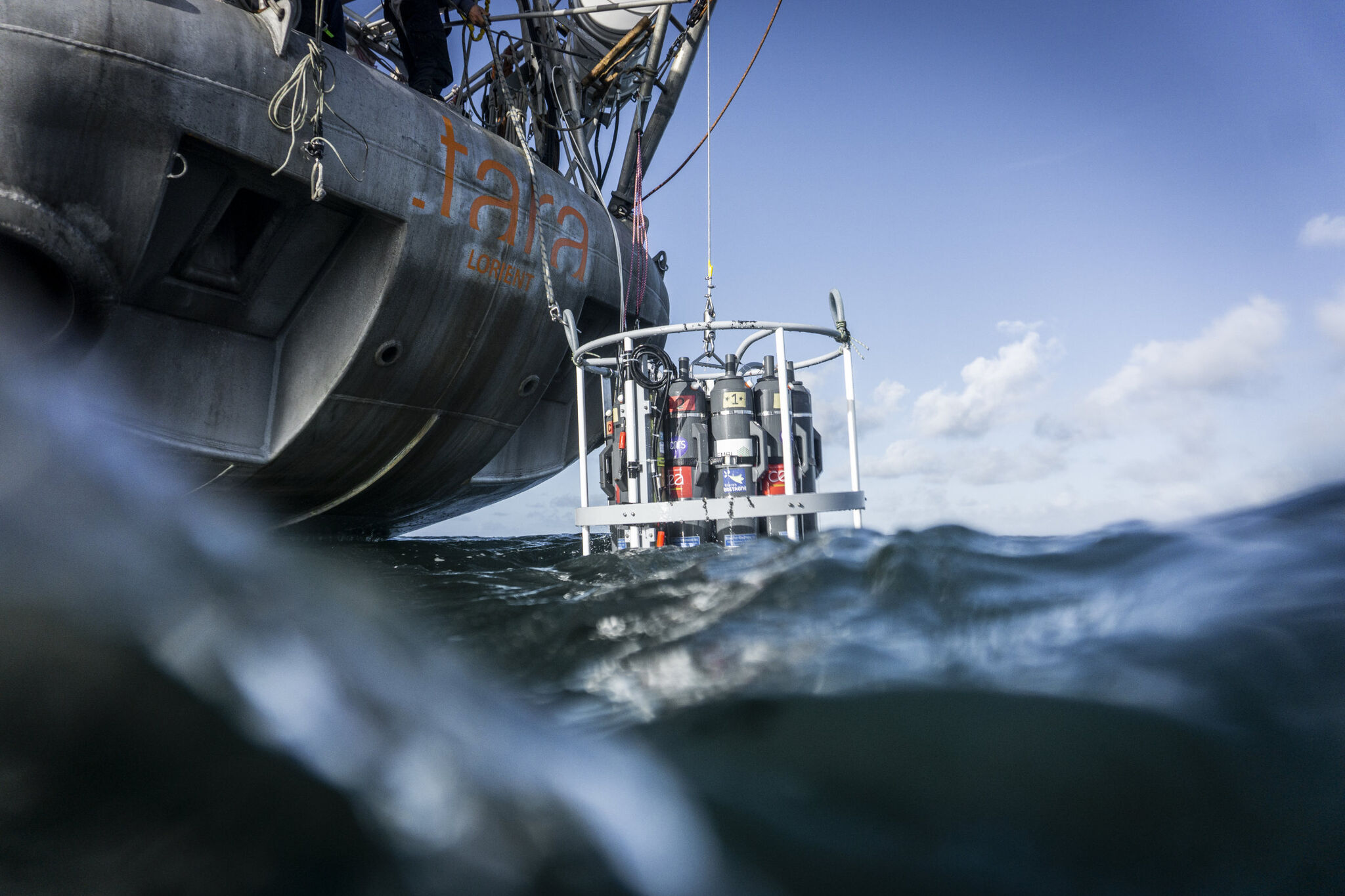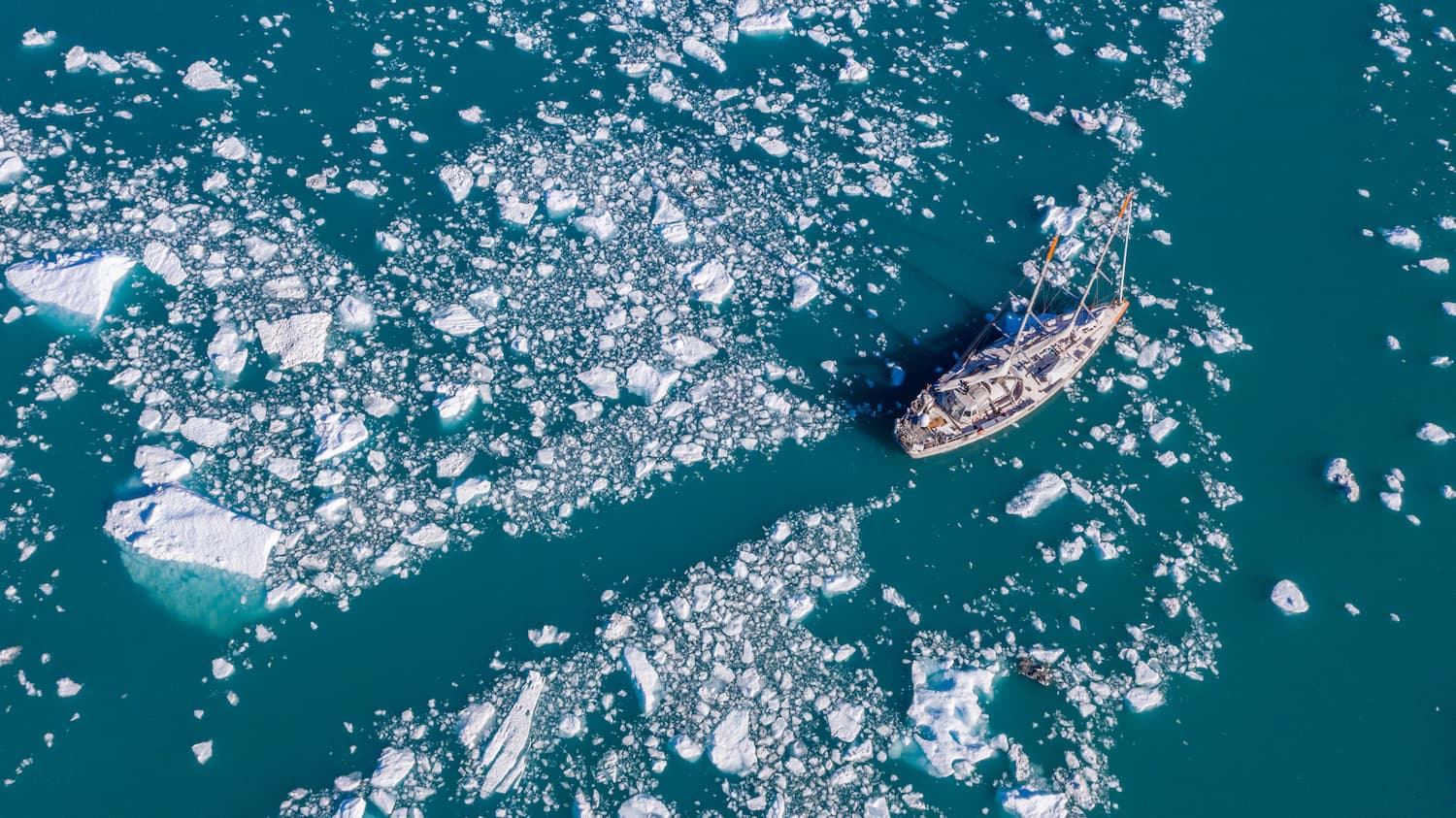The origins of Tara:
the only schooner of its kind in the world
The heroine of Tara
1989, Antarctica
It sprang from the imagination of the French doctor and explorer Jean-Louis Étienne and the revolutionary vision of Luc Bouvet and Olivier Petit. The schooner took up the challenge of the ice to study the polar regions in Antarctica.
1999, Seamaster
New Zealander Sir Peter Blake, the famous seafarer and ardent militant ecologist, bought the schooner.He was murdered aboard the Seamaster by pirates in the seas of Brazilian Amazonia.
2003, Tara
It was under the colours of French fashion designer agnès b. and Étienne Bourgois that the extraordinary schooner was able to continue its journey.
When Étienne Bourgois decided to take it over, his intention was to continue the work of his two predecessors to the benefit of the protection of the ocean. Armed with a collective experience made up of enriching encounters and unfailing friendships, in 2004, the schooner Tara set off to drift in the Arctic.
The adventure of Fondation Tara Océan then began, supported by a passionate and committed team both on land and sea, mobilised by an incredible desire to serve ocean science and share the results with as many people as possible
- 2 Masts on the schooner Tara
- 500,000 km already covered and it’s not finished yet!
- 36 metres long
-
– 41°C
the lowest temperature to which
the schooner was exposed
Characteristics
A floating laboratory
-
Lenght
36 metres
-
Mast
27 metres
-
Crew
12 people
-
Width
12 people
-
Draught
3,50 metres
-
Deadweight tonnage
130 tonnes
-
Sails
400 square metres
-
Thickness of the hull
4.5 centimetres
-
Desalinator
300 litres/hour
-
Sleeping accommodation
16
-
Autonomy
500 nautical milles
-
Flag
France
The expeditions of the schooner
Microbiomes
Current expedition
Better understanding the invisible life of the ocean
Having identified, studied and decoded all the inner workings of the ocean, this new mission decided to take a global approach and treat the ocean ecosystem as a whole. To do that, we needed to get back to basics, to the most important actor present in every aspect of this ecosystem: the microbiome.
What else?
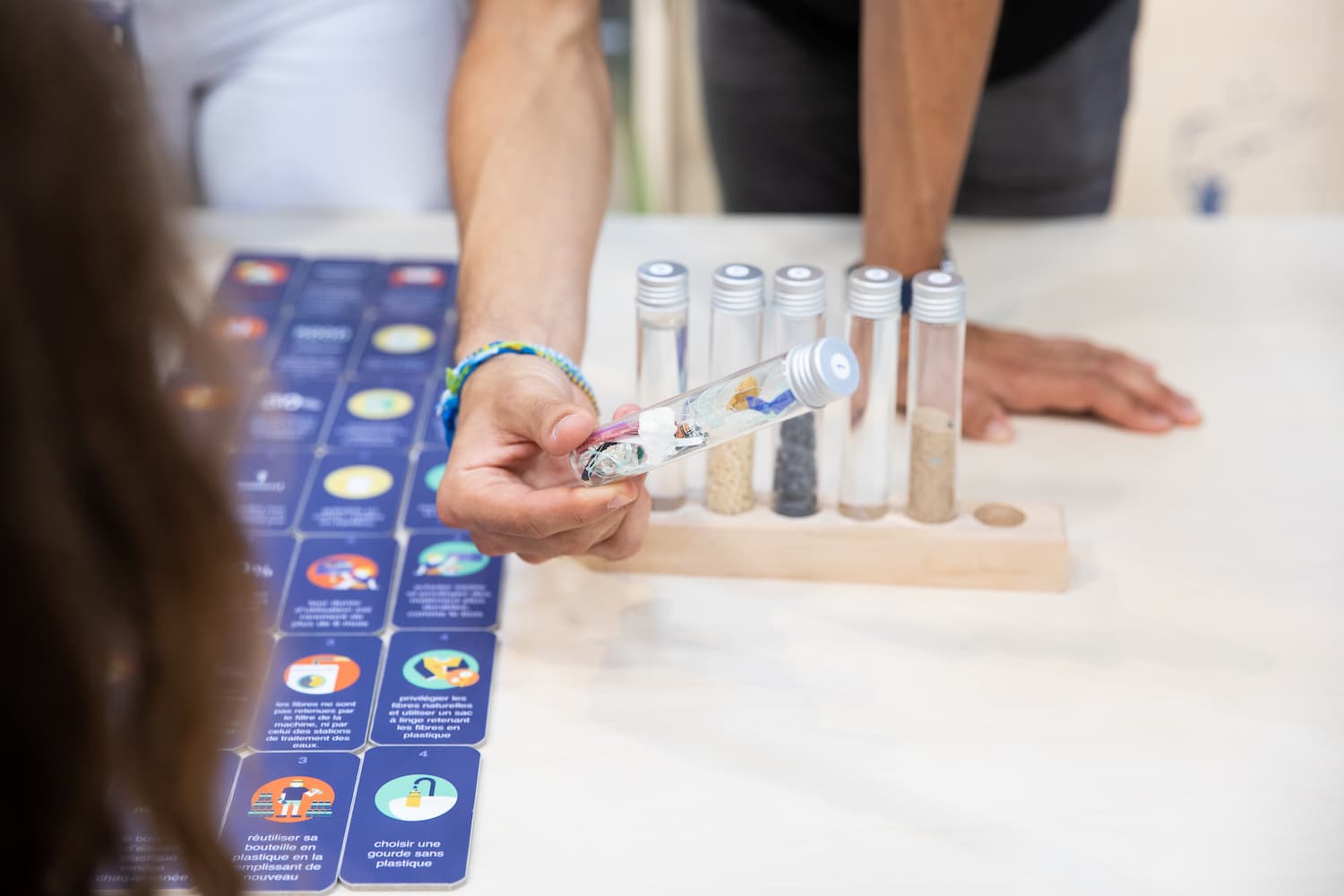
How can we reduce pollution in the ocean?
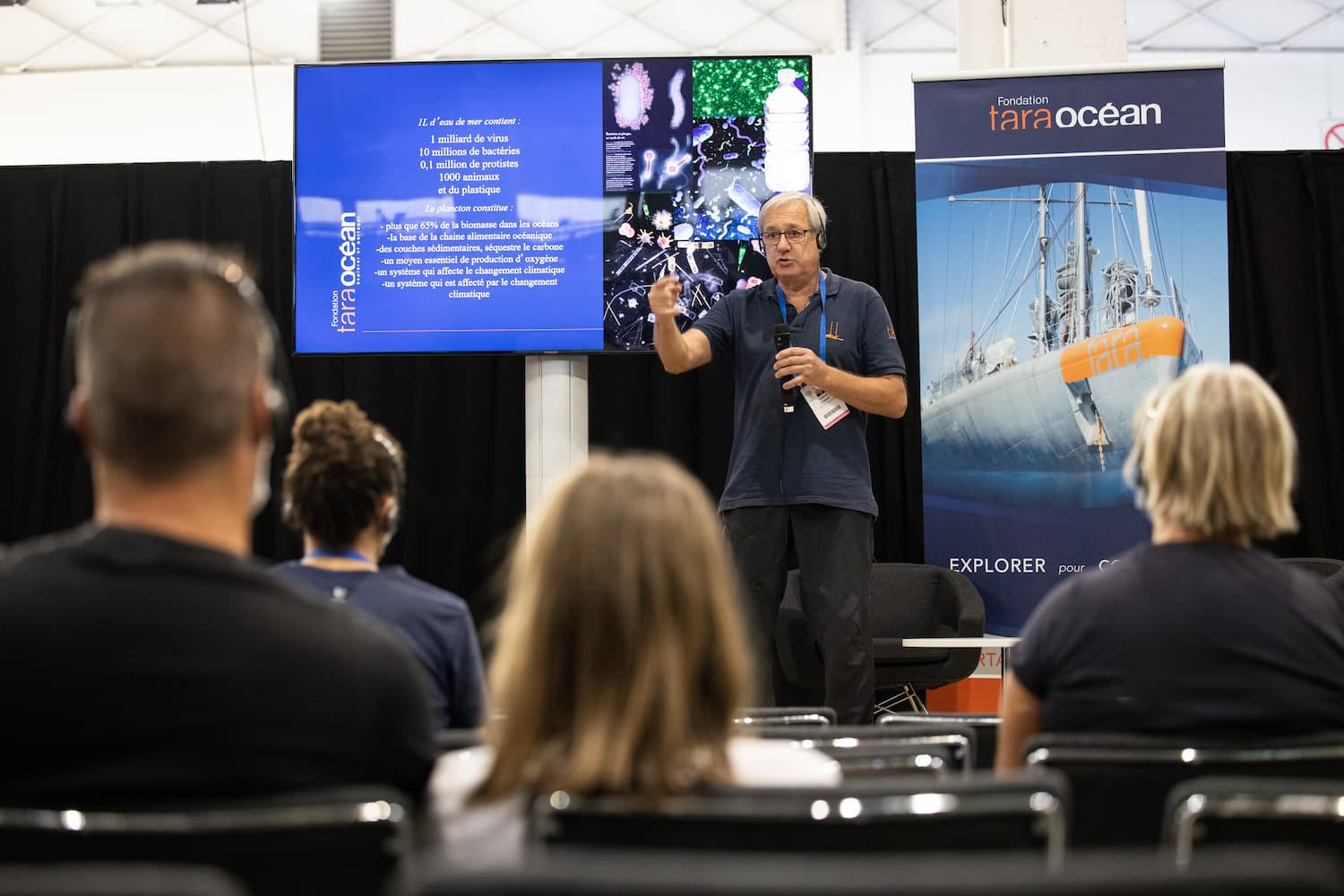
Discover our history and our commitments
